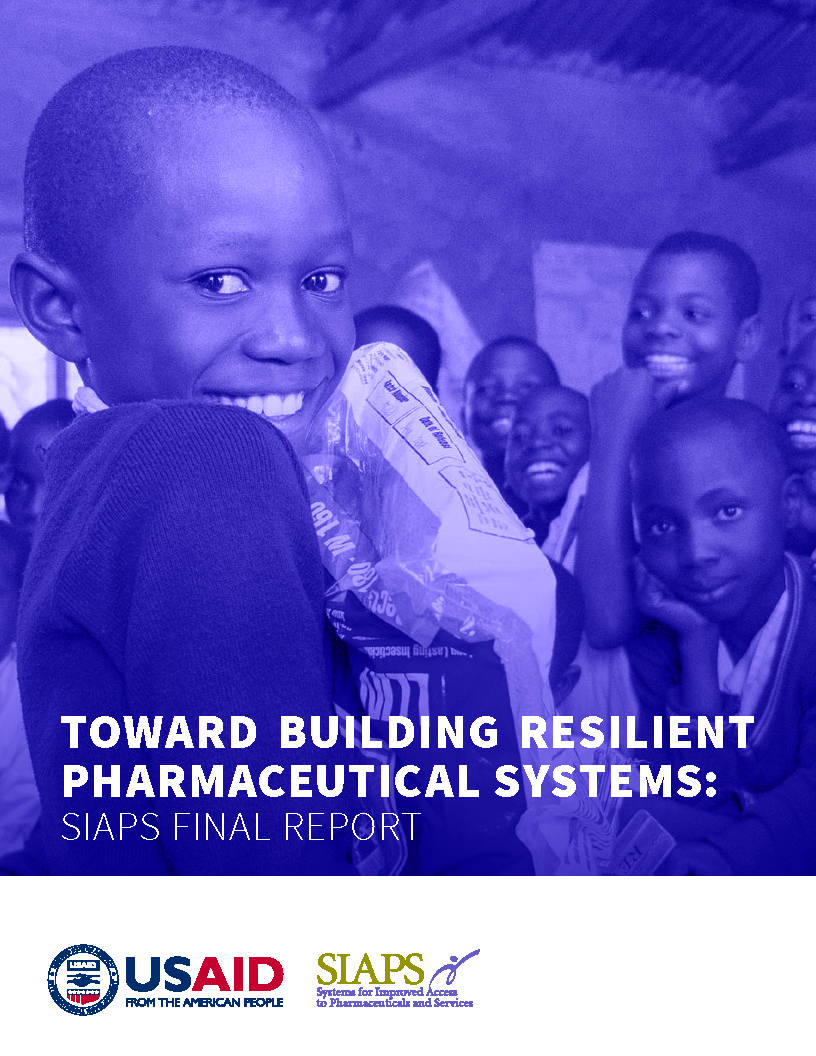Pharmaceutical and health program managers in Namibia’s public health sector now have a tool to more accurately monitor stock levels and availability of all pharmaceutical products at health facilities countrywide. This follows the launch of the Pharmaceutical Management Information Dashboard in Windhoek, on Thursday, June 23, 2016. Until recently, pharmacy personnel at the Ministry of … Read more
Archive Featured
Hastening ARV Dispensing in Namibia’s Public Health Facilities with the Electronic Dispensing Tool: Mr. George Lukonga’s Experience
By Harriet Kagoya, Senior M&E Advisor and Chipo Chirefu-Toto, Senior Finance and Operations Manager for the SIAPS Program Mr. George Lukonga is accustomed to dealing with 200 to 300 patients being treated with antiretroviral therapy (ART) on a daily basis. Lukonga is the Senior Pharmacist Assistant at the Katima Mulilo Hospital in the Zambezi region … Read more
Pharmacist Assistants Alleviate the Shortage of Pharmacy Staff at Public Health Facilities in Namibia
The Omusati region of Namibia has the second-highest HIV prevalence in the country, standing at 17.4%—higher than the national average of 13.1 reported in 2013. Decreasing the HIV prevalence and improving pharmaceutical services for antiretroviral therapy (ART) in Omusati—and the country as a whole—is therefore a goal of the Ministry of Health and Social Services … Read more
Using OSPSANTE for the Improvement of Medicines Availability in Mali
Ensuring the availability and proper use of logistical information for decision-making is a major challenge for the Malian health system at both the regional and central levels. Until 2015, Mali was using a paper-based system to manually compile, analyze, and aggregate data. This increased the risk of errors and required significant time from health facility … Read more
Good Practices for the Dispensing of High-Cost Medicines in the Framework of an Integrated Supply System
Background Within the framework of health sector reform, the National Health Service (Servicio Nacional de Salud) of the Dominican Republic has been implementing the Integrated System for Medicine and Supply Management (Sistema Único de Gestión de Medicamentos e Insumos, or SUGEMI) in the public health services network. Its objective is to improve public access to … Read more
Ending Malaria for Good: Systems Strengthened, Lessons Learned
One of the world’s oldest diseases, malaria claimed 1.2 million lives at its peak in 2004. Today, with proven prevention and treatment strategies, nine countries have now eradicated malaria. However, malaria still claims more than 400,000 lives each year—mostly children under the age of five in sub-Saharan Africa. The costs of malaria do not stop … Read more
Strengthening Systems to Fight Malaria in Guatemala
To achieve the objective of eliminating malaria in Guatemala, timely access to appropriate treatment is a key strategy for the Ministry of Health. One of the mainstays of this strategy is the network of community volunteers who provide diagnosis and treatment for malaria in their communities. After an assessment identifying weaknesses in the management of … Read more
Publication Highlight: Improving Medicines Access and Use for Child Health—A Guide to Developing Interventions
Improving Medicines Access and Use for Child Health—A Guide to Developing Interventions represents an up-to-date[i] and practical resource for those developing interventions to improve access to and use of medicines for child illness. While it primarily targets groups working in community organizations, health facilities, and district health offices, it could also be used within the … Read more
World TB Day 2016: Celebrating Successes and Lessons Learned in Swaziland
In 2012, bedaquiline was conditionally approved by the U.S. Food and Drug Administration for the treatment of drug-resistant tuberculosis (TB), making it the first new TB drug to enter the market in more than 40 years. With the rise of multidrug-resistant and extensively drug-resistant TB leaving patients with fewer treatment options, the approval of bedaquiline … Read more
Stronger Health Systems: How SIAPS is Contributing to the End TB Strategy
The WHO End TB Strategy aims to end the global TB epidemic with a three-pronged approach. Targets include reducing TB deaths by 95%, cutting new cases by 90% between 2015 and 2035, and ensuring that no family is burdened with catastrophic expenses due to TB. Our new infographic shows how SIAPS is fighting TB in line with … Read more


